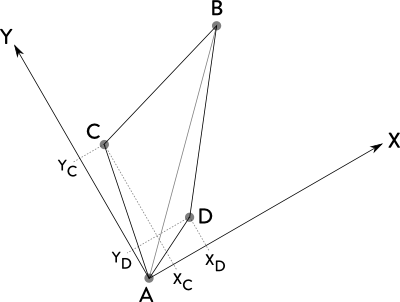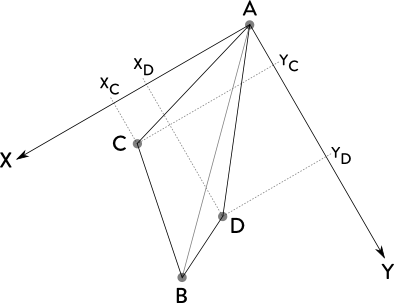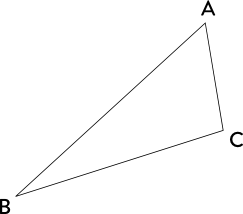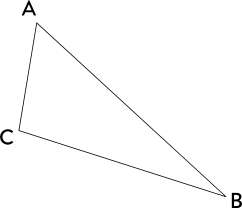Hi all,
Some users have asked us about the new features we have introduced in the latest version of the StarAlignment tool, and how these features should be used in practice. Here is a brief list with a few recommendations of interest to all PixInsight users.
* Unless it is really necessary, don't use the distortion correction feature. In general, distortion correction is only necessary in two cases:
- Registration of images acquired with different telescopes or lenses.
- Wide field mosaics.
If the images being registered are not subject to differential distortions, applying distortion correction won't provide more accuracy. It will only slow down the process.
* For registration of images from different instruments, try using distortion correction with a projective registration model instead of 2-D surface splines. In most cases, accurate image registration can be achieved with a projective model, which is much more robust and less prone to local deviations than surface splines.
* Distortions caused by dithering of wide-field images can now be fixed with default StarAlignment parameters. Distortion correction isn't normally necessary in these cases.
* Polygonal descriptors cannot work under specular transformations (horizontal or vertical mirror). If you have mirrored images (for example, images acquired with a Newton telescope and a refracting telescope being registered in the same batch), you have two options:
- Either apply the appropriate mirror operation with the FastRotation tool prior to image registration,
- Or use triangle similarity for image registration. On the StarAlignment tool, open the Star Matching section and select "Triangle similarity" as the value of the "Descriptor type" parameter.
* Whenever you use surface splines, check the correctness of your registered images. Surface splines (aka thin plates) are extremely flexible interpolation devices. This flexibility makes them particularly well suited for accurate image registration under strong local distortions, but also poses the risk of local deviations. For example, suppose you have an asteroid in one of your images that appears as a punctual object, and happens to be located very close to a star. The computed position for that star could be slightly displaced due to the proximity of the asteroid. If you register this image using surface splines, the displaced star could induce some distortion on a small area of the registered image. These problems almost never happen in practice, but checking your images is always a good idea. Use the PixelMath process to subtract the registered and reference images and inspect the result. For example, assuming that you have "reference" and "registered" images, this PixelMath expression:
computes the absolute value of the difference.
* When available, an accurate distortion model is always preferable to the distortion correction feature. We'll have to wait until our great script developers write a nice distortion modelling tool
* For registration of very low-SNR images, you may need to use the noise reduction parameter (Star Detection section). The new star detection routines are faster and more accurate, but they are not well suited to work under heavy noise. The new noise reduction parameter solves this problem.
* The StarAlignment tool is still undergoing extensive research and development, so you may expect more features and improvements during the next months, especially better distortion correction capabilities. Please feel free to ask for help on this forum if you encounter difficulties to register your images; we'll be glad to take a look and learn from them.
Some users have asked us about the new features we have introduced in the latest version of the StarAlignment tool, and how these features should be used in practice. Here is a brief list with a few recommendations of interest to all PixInsight users.
* Unless it is really necessary, don't use the distortion correction feature. In general, distortion correction is only necessary in two cases:
- Registration of images acquired with different telescopes or lenses.
- Wide field mosaics.
If the images being registered are not subject to differential distortions, applying distortion correction won't provide more accuracy. It will only slow down the process.
* For registration of images from different instruments, try using distortion correction with a projective registration model instead of 2-D surface splines. In most cases, accurate image registration can be achieved with a projective model, which is much more robust and less prone to local deviations than surface splines.
* Distortions caused by dithering of wide-field images can now be fixed with default StarAlignment parameters. Distortion correction isn't normally necessary in these cases.
* Polygonal descriptors cannot work under specular transformations (horizontal or vertical mirror). If you have mirrored images (for example, images acquired with a Newton telescope and a refracting telescope being registered in the same batch), you have two options:
- Either apply the appropriate mirror operation with the FastRotation tool prior to image registration,
- Or use triangle similarity for image registration. On the StarAlignment tool, open the Star Matching section and select "Triangle similarity" as the value of the "Descriptor type" parameter.
* Whenever you use surface splines, check the correctness of your registered images. Surface splines (aka thin plates) are extremely flexible interpolation devices. This flexibility makes them particularly well suited for accurate image registration under strong local distortions, but also poses the risk of local deviations. For example, suppose you have an asteroid in one of your images that appears as a punctual object, and happens to be located very close to a star. The computed position for that star could be slightly displaced due to the proximity of the asteroid. If you register this image using surface splines, the displaced star could induce some distortion on a small area of the registered image. These problems almost never happen in practice, but checking your images is always a good idea. Use the PixelMath process to subtract the registered and reference images and inspect the result. For example, assuming that you have "reference" and "registered" images, this PixelMath expression:
registered -- reference
computes the absolute value of the difference.
* When available, an accurate distortion model is always preferable to the distortion correction feature. We'll have to wait until our great script developers write a nice distortion modelling tool
* For registration of very low-SNR images, you may need to use the noise reduction parameter (Star Detection section). The new star detection routines are faster and more accurate, but they are not well suited to work under heavy noise. The new noise reduction parameter solves this problem.
* The StarAlignment tool is still undergoing extensive research and development, so you may expect more features and improvements during the next months, especially better distortion correction capabilities. Please feel free to ask for help on this forum if you encounter difficulties to register your images; we'll be glad to take a look and learn from them.





